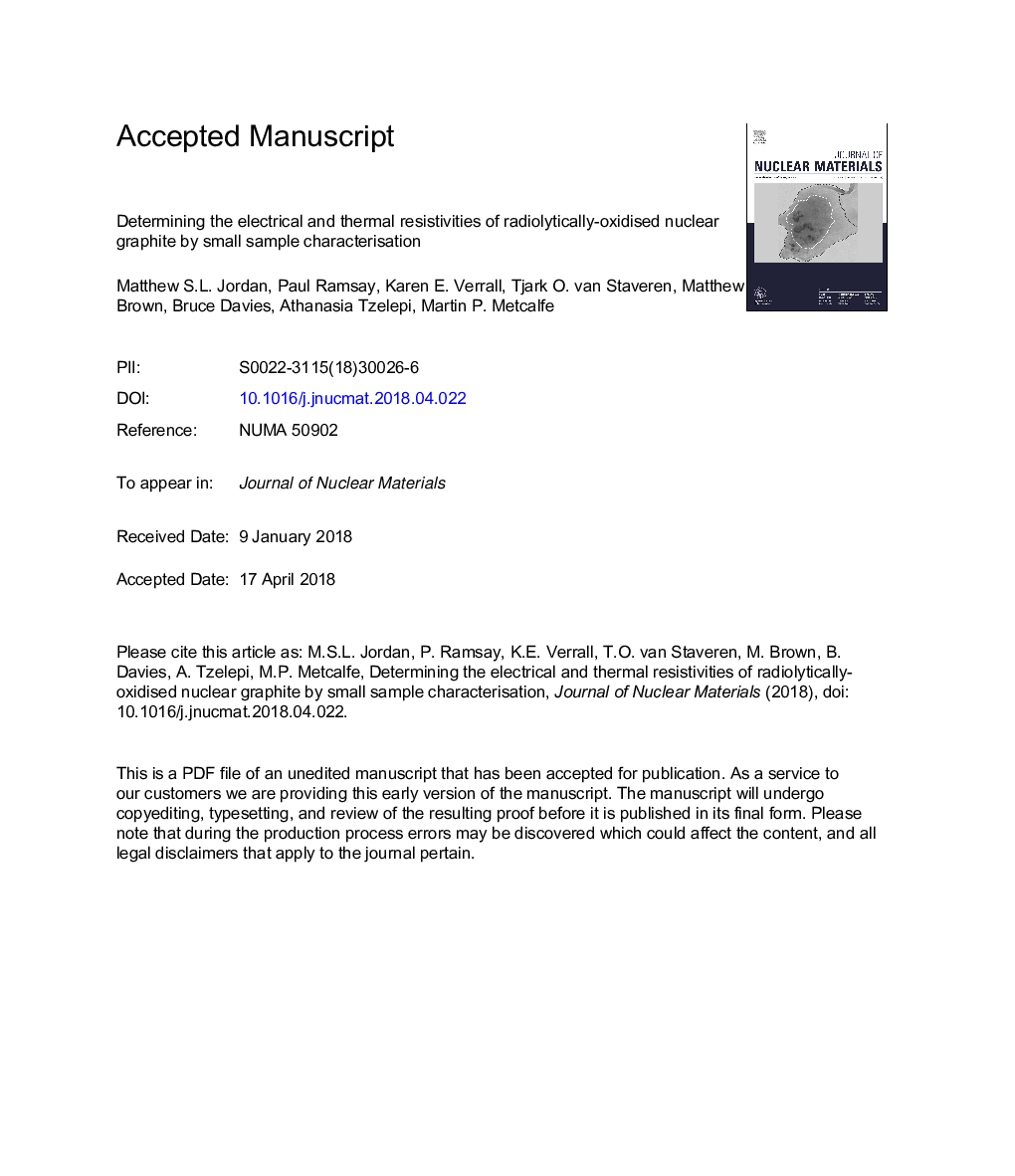| Article ID | Journal | Published Year | Pages | File Type |
|---|---|---|---|---|
| 7963166 | Journal of Nuclear Materials | 2018 | 32 Pages |
Abstract
Property measurement of graphite extracted from operational nuclear reactors is vital for forward prediction of the graphite's properties and integrity as part of continued operation and plant life extension assessments. Limited core monitoring material is available, so robust and efficient measurement techniques are required for samples with constrained dimensions. The validation of a technique for measuring electrical resistivity in small graphite samples (largest dimensionâ¯<â¯20â¯mm) is described with an empirical validation of the geometry correction factors. The electrical and thermal characterisation of 175 radiolytically-oxidised Gilsocarbon-grade graphite samples extracted from four advanced gas-cooled reactors (AGRs) is presented, including a subset that were further oxidised in an accelerated-irradiation test programme. The selected material sampled radiolytic-oxidation induced weight losses of up to 59% and doses of up to 193â¯Ãâ¯1020 n.cmâ2 equivalent DIDO nickel dose, or ca. 28 displacements per atom. For all the measured oxidation states, a linear correlation between thermal diffusivity and density is demonstrated, with power law functions found to describe the trends in thermal and electrical resistivity with density. The effect of the oxidation on the phenomenologically-different heat and electrical transport mechanisms is considered and electrical resistivity, ÏE, is shown to be an excellent proxy for thermal resistivity, ÏT, with a calibration function ÏE â ÏT0.66. For low weight loss samples, including virgin Gilsocarbon, a linear approximation is also described.
Related Topics
Physical Sciences and Engineering
Energy
Nuclear Energy and Engineering
Authors
Matthew S.L. Jordan, Paul Ramsay, Karen E. Verrall, Tjark O. van Staveren, Matthew Brown, Bruce Davies, Athanasia Tzelepi, Martin P. Metcalfe,
